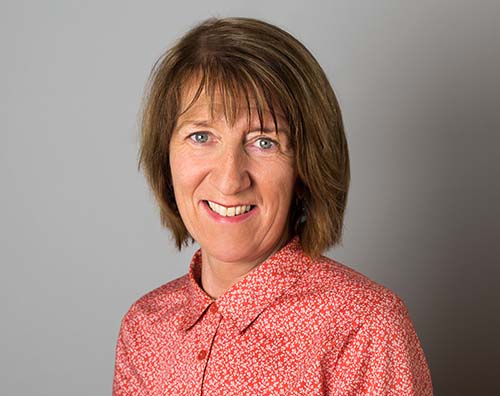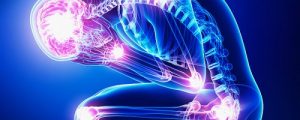
CHRONIC PAIN

Chronic Pain
Pain, acute or chronic, is very stressful and disabling. It can leave us not enjoying our lives and activities and simple things like a taking a shower or cooking dinner can become a major task.
Acute pain, which is not relieved by over the counter medication, needs to be assessed by a doctor or a chartered physiotherapist. If the pain is not relieved and continues, it can become chronic and begin to control how we manage our daily lives.
Assessment by a Chartered Physiotherapist can diagnose and treat musculoskeletal conditions that cause pain and prevent them becoming chronic and thus prolonging the pain and discomfort.
Treatment and appropriate exercise is essential to rehabilitate pain that is present in joints, muscles, tendons and ligaments.
A Chartered Physiotherapist has the skill, ability and competence to resolve many conditions of pain that is found in the body.
SPORTS INJURIES
The more active we are as a population, the more likelihood an injury can occur. The injury can be acute, e.g. in muscle, an acute sprain or tear can occur or chronic, one could experience delayed onset muscle soreness but can still continue to participate in their sport.
Sport Injuries can be caused by several factors which have to be identified, assessed and treated. They have to be prevented from recurrence. This can happen frequently and hamper return to sport. This does not only happen to the elite sports person but also to the regular walker or jogger.
A sports injury treated early will respond and heal. If left to get better of its own accord, pain and disability can occur and it can interfere with performance and enjoyment of taking part in the sport.
It may just be a vague ache, pain or stiffness but continuing to take part in the sport can aggravate the symptoms until you cannot take part. Pain at night can be a feature if the injury is not treated.
Ligaments, bones, joints, tendons, bursa, cartilage and nerves are all areas where injury can take place. Some can be very serious, needing urgent medical assessment and possible surgery but most can be treated and managed by a Chartered Physiotherapist.
LOWER BACK PAIN
Low Back Pain is an extremely common symptom in the general population and among athletes.
Back pain affects up to 85% of the population at some time in their lives. 90% will improve over a 3 month period and nearly 50% will have at least one recurring episode.
To manage and treat back pain, a detailed and careful assessment and examination diagnoses the problem and the appropriate treatment is given.
The assessment and examination confirm the diagnosis and appropriate and targeted treatment can commence.
There are several conditions causing low back pain which can be diagnosed by a Chartered Physiotherapist. These include soft tissue injury to the spinal muscles and spinal ligaments, disc injury with radiating pain known as Sciatica or disc injury presenting as Low Back Pain. Joints known as Facets Joints in the low back can cause acute pain also. Generalised weakness in abdominal and spinal muscles with poor posture can cause back pain. Repetitive strain or doing a task incorrectly can over period of time can cause back pain.
In the management of most cases of Low Back Pain, investigations are not required. Should you require onward referral, this can be arranged.
There is no one treatment plan to suit all cases of back pain. Expert examination determines the treatment and rehabilitation. Treatment can include over the counter pain relief, acupuncture, mobilization and manipulation, soft tissue therapy, dry needling, neural mobilization and exercise therapy.
Rehabilitation Pilates is a specialised exercise programme to treat, rehab and prevent recurrence of back pain. The client should always attend a programme to manage low back pain and prevent recurrence longterm.
NECK PAIN
A painful neck can be very distressing, disabling and annoying for the individual and cause intense pain. Many painful necks do not have serious issues and are soft tissue injuries, predominantly the muscles of the neck, due to incorrect posture or repetitive strain injury. This can be referred to as Mechanical Neck Pain. Other structures likely to cause neck pain are cervical discs, cervical joints, tightness in the nerves, poor head and neck posture and weakness of the shoulder/scapular area.
Symptoms can include headaches at the back and front of the head. 14% to 18% of all headaches are caused by neck stiffness and pain. Pain can be felt at the side of the face, anywhere in the neck and along the top of the shoulder area radiating to the medial border of the scapula. Stiffness can be present on movement, e.g. turning side to side. Sleep can be disturbed. The type of pain indicates the severity of the condition. There can be referred pain to the arm and hand with numbness and tingling. In the elderly population, arthritis of the cervical joints is common.
The management of neck pain requires a thorough history and examination of the joints, muscles and nerves. The Chartered Physiotherapist will then decide on the appropriate treatment and management depending on the examination. A simple thing like correcting and changing pillows can be very effective in reducing neck pain.
Treatment of painful necks will include massage, mobilizations, posture correction and exercise therapy. Neck pain management needs advice and better ergonomic work practice. Work practises need to be discussed especially with VDU and Laptop users.
Strengthening of the cervical muscles and shoulder and scapular muscles prevents recurrence and can resolve neck pain.
I recommend taking part in a specialised exercise programme which targets weak neck and shoulder muscles which will improve posture and prevent recurrence. Core strength is essential to maintain a good posture.
ARTHRITIS
Arthritis is an inflammation of the joints that causes pain and immobility, ranging from mild to severe. In Ireland around 915,000 people, including 1 in every 1,200 children, are living with arthritis, making it the single biggest cause of disability.
The most common forms are osteoarthritis (OA), rheumatoid arthritis (RA) (also known as rheumatic arthritis) and fibromyalgia. Although many symptoms of arthritis are shared across the common forms, like pain, fatigue and inflammation, there are many symptoms unique to each disease too.
People of all ages are living with arthritis, not just the elderly – the average age of diagnosis for people with Rheumatoid Arthritis is 35. No arthritis cure exists at present and it is not known what causes it. However, there are many medical and non-medical arthritis treatments available that can help you to control your arthritis
Osteoarthritis (OA) is the most common of all types of arthritis. It usually develops gradually, over several years, and affects a number of different joints. The cause is unknown, but it does appear more in females than males and often starts after the menopause.
Osteoarthritis used to be considered wear and tear arthritis, but it is now understood that there are many more factors than age and use that contribute to the development of osteoarthritis – including obesity, past injury and genetics.
Rheumatoid arthritis (RA) is a very common type of inflammatory. Arthritis. In most diseases, inflammation serves a purpose – it helps healing and, when healing is done, the inflammation goes away. In RA the opposite occurs.
The RA inflammation causes damage – it can go on for a long time, or come and go. When it is active – known as a flare-up – you may feel unwell.
The body’s natural defences (the immune system) are part of the problem in rheumatoid arthritis. It somehow puts itself into reverse and attacks certain parts of the body instead of protecting it. This auto-immune reaction occurs mainly in the joints, but in a flare-up other organs can be affected. It is not known what causes the immune system to react in this way.
Fibromyalgia is another of the more common types of arthritis that causes widespread and severe pain, aching and fatigue but affects the muscles, ligaments and tendons rather than the joints. It may affect one part of the body or several different areas such as the limbs, neck and back.
Other forms of more well-known arthritis conditions are Psoriatic, Gout, Ankylosing Spondylitis and Juvenile Arthritis.
Medication from your GP and Rheumatologist manages your pain and inflammatory attacks. Many patients take preventive medication.
PHYSICAL ACTIVITY
Physical activity is proven to be a vital part of managing arthritis. As well as reducing pain and inflammation, keeping active improves joint support and lubrication, helps with weight control and has many other health benefits.
Taking part in exercise classes, e.g. gentle Pilates and low weight strengthening classes can improve flexibility and strength.
Dancing, walking and swimming can be very beneficial if not overdoing it.
Advice and guidance from a Chartered Physiotherapist is recommended to get the maximum benefit from a physical programme and to assist with pain management.
Psoriatic Arthritis
Some people who live with the skin condition psoriasis also develop another of the types of arthritis known as psoriatic arthritis. It causes inflammation in and around the joints.
Psoriatic arthritis can affect most joints, but typically causes problems in fingers and toes, with pitting and discoloration of nails. About a third of people with psoriatic arthritis also have spondylitis – a stiff, painful back or neck caused by inflammation in the spine.
FOOT PROBLEMS
Foot problems are very varied and we like to discuss them in the sections of the foot. The three main areas are rear foot (heel), midfoot (the area where you tie your laces) and forefoot (pain on the toes).
The rear foot pain needs detailed history and assessment. Conditions associated with rear foot pain are Plantar Fasciitis, Heel Spur, Bruised Heel and Nerve Entrapment Syndromes. The tendon of Achilles at the back of the heel and chronic Ankle Joint Sprains should always be considered in rear foot pain.
Mid foot pain is usually caused by midtarsal joint pain after ankle injury. However a stress fracture of the mid foot bones cannot be excluded especially if running is the sport involved.
Forefoot pain can be caused by calluses, corns, nail problems to bone and joint abnormalities of the toes, e.g. Hallux Valgus, Morton’s Neuroma, Stress Fractures and Fractures to the 5th Metatarsal Bone, which can be prone to not healing.
All foot pain needs careful history taking and examination. There can be incorrect weight bearing through the foot and a detailed Muscle Imbalance Assessment of the Lower Limb should be included and appropriate rehabilitation commenced.
